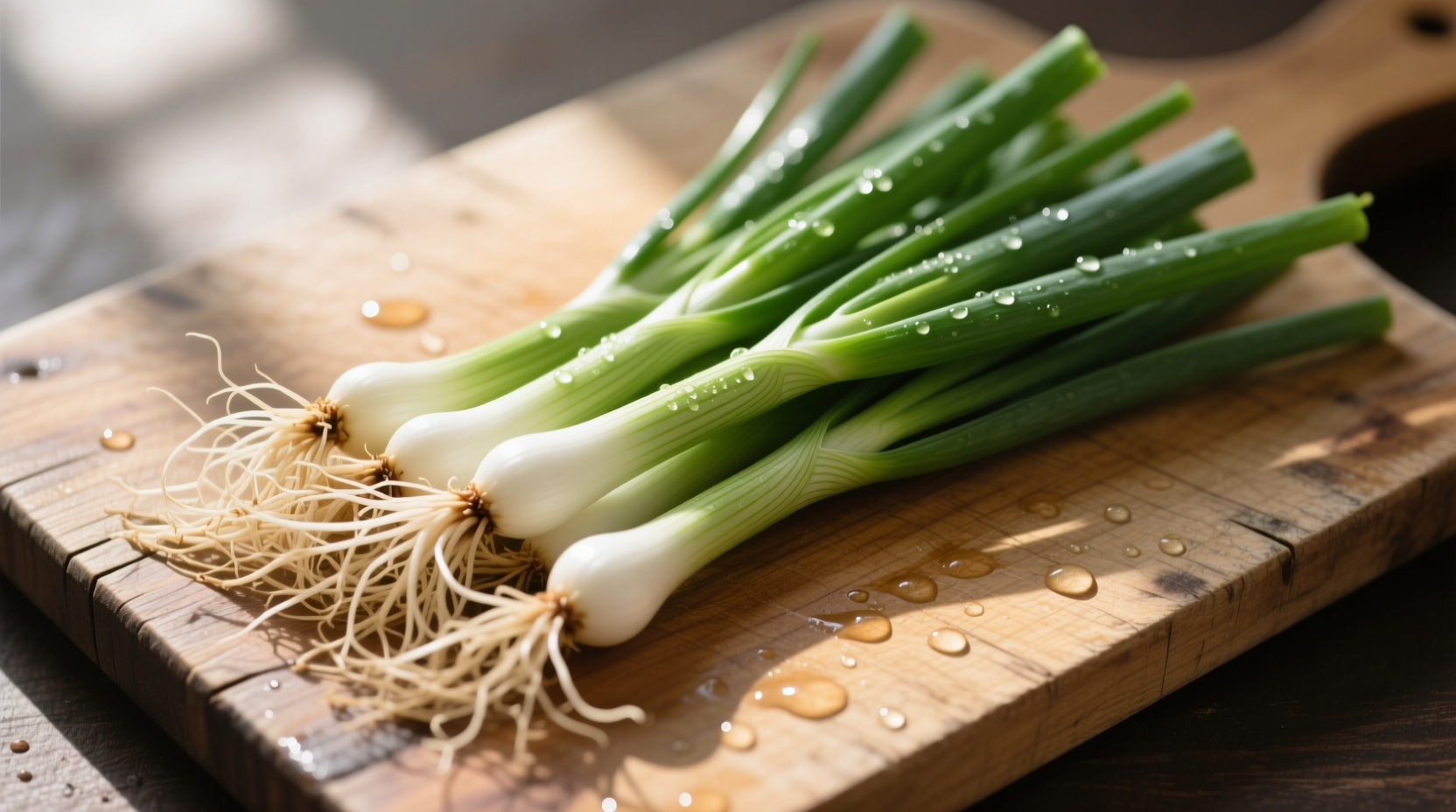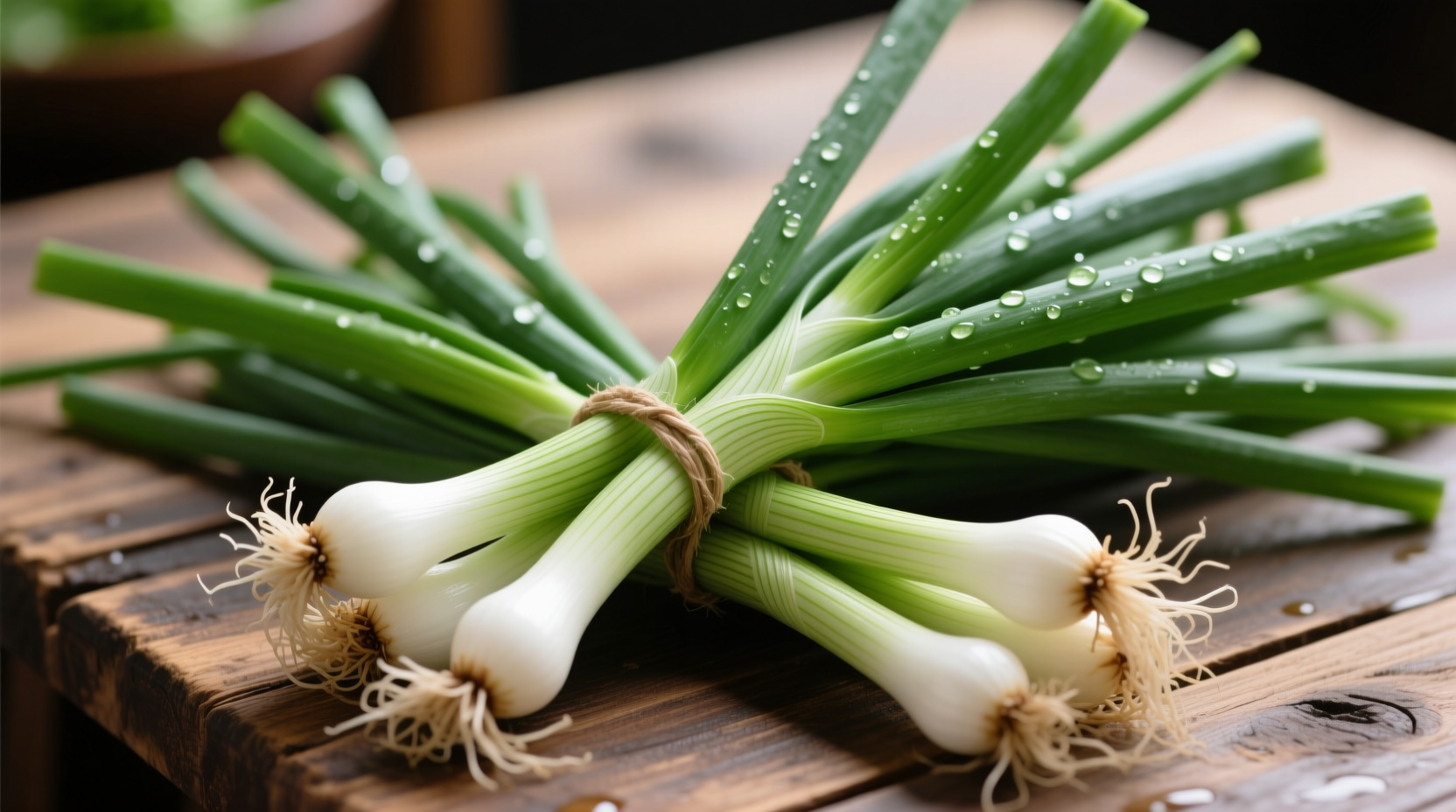Yes, scallions and green onions are the same vegetable—scientifically classified as Allium fistulosum. Both terms refer to young onions harvested before bulb development, featuring crisp white roots and hollow green stalks. The naming difference stems from regional preferences, not botanical distinctions. This guide clarifies terminology confusion, explains culinary applications, and provides storage tips backed by agricultural research.
Ever stared at a recipe calling for "scallions" while your grocery store labels them "green onions"? You're not alone. This common kitchen confusion affects home cooks worldwide. Let's cut through the terminology jungle with facts verified by agricultural experts and culinary professionals.
Why the Naming Confusion Exists
The terms "scallion" and "green onion" describe identical plants at the same growth stage. According to the USDA Agricultural Research Service, both refer to Allium fistulosum harvested when the stem diameter measures less than 1 cm. The naming variation primarily reflects regional dialects:
| Region | Preferred Term | Local Context |
|---|---|---|
| United States (Northeast) | Scallions | Used in culinary schools and professional kitchens |
| United States (West Coast) | Green onions | Common in grocery store signage |
| United Kingdom | Spring onions | Refers to slightly more mature bulbs |
| Asia | Welsh onions | Historical misnomer from European trade |
Botanical Reality vs. Culinary Perception
Despite persistent myths, there's no botanical difference between scallions and green onions. Cornell University's Horticulture Department confirms they're the same cultivar harvested at identical growth stages. The confusion often stems from:
- Misidentified lookalikes: Some stores mistakenly label immature shallots as "scallions"
- Regional maturity standards: West Coast grocers often sell slightly more mature specimens
- Historical terminology: "Scallion" derives from the French "échalote" (shallot), causing persistent confusion

When Substitutions Matter: Culinary Applications
Understanding these nuances prevents recipe disasters. Professional chef Antonio Rodriguez explains:
"The white bulb provides sharp onion flavor while the green stalk offers subtle herbal notes. In ceviche or Bloody Marys, use only whites for punch. For garnishes like Chinese scallion pancakes, the greens provide essential color and mild flavor. Never substitute mature onions—they'll overwhelm delicate dishes."
Proven Substitution Guide
- Perfect 1:1 swap: Scallions ↔ green onions in any recipe
- Partial substitute: 3 parts chives + 1 part minced onion (for garnishes only)
- Avoid: Leeks (too fibrous) or mature onions (too pungent)
Storage Science: Maximizing Freshness
Research from the University of California Agriculture and Natural Resources shows proper storage extends shelf life by 40%. Follow these evidence-based methods:
- Refrigeration: Store roots-down in 1" water, covered with plastic bag (lasts 2-3 weeks)
- Freezing: Blanch greens for 30 seconds, freeze flat in bags (6 months)
- Revival trick: Soak limp scallions in ice water for 20 minutes
Common Misconceptions Debunked
Let's address persistent myths with verified facts:
- Myth: Green onions develop into regular onions
Fact: They're a distinct species (Allium fistulosum) that never forms large bulbs - Myth: Spring onions are the same as scallions
Fact: Spring onions have 1-2" bulbs and stronger flavor (per University of Minnesota Extension) - Myth: The green part is less flavorful
Fact: Greens contain different sulfur compounds creating unique herbal notes
Practical Cooking Tips from the Test Kitchen
Maximize flavor in your dishes with these professional techniques:
- Knife skills: Slice at 45° angles for even cooking and visual appeal
- Heat management: Add whites early in cooking, greens in last 2 minutes
- Flavor pairing: Complements fish, eggs, and Asian cuisines (especially ginger and garlic)
- Waste reduction: Regrow from roots in water (change water every 3 days)











 浙公网安备
33010002000092号
浙公网安备
33010002000092号 浙B2-20120091-4
浙B2-20120091-4